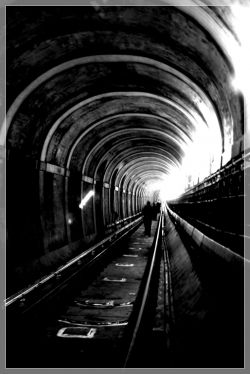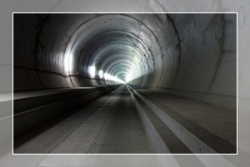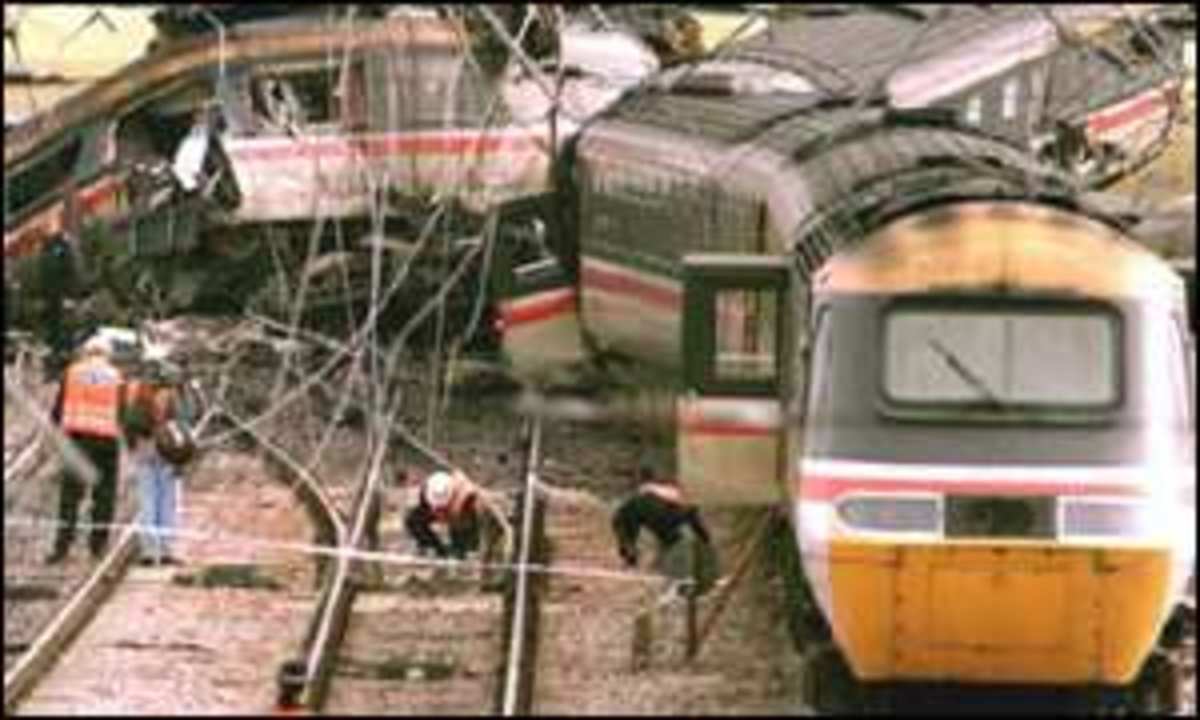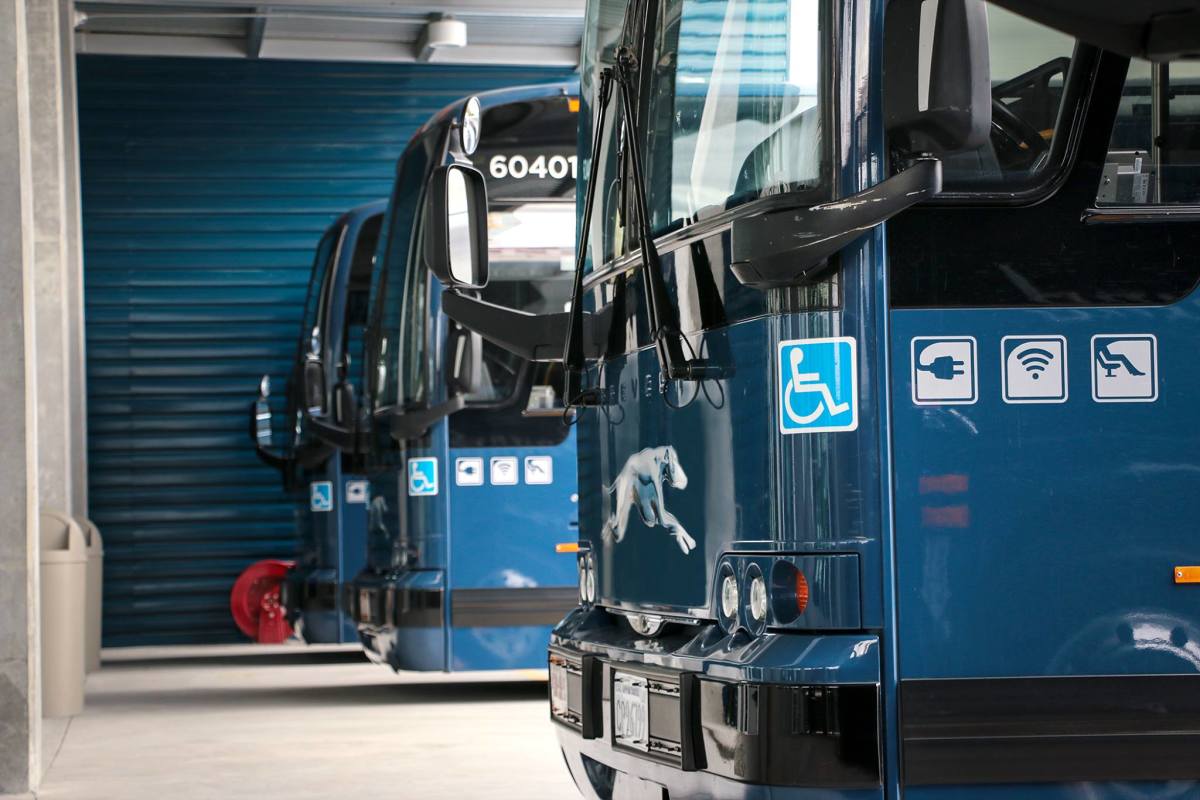Transatlantic Tunnels - Possible?

Tunnelling Extremes
Imagine boarding a train in London and riding it all the way to New York!
This theoretical rail route would involve a magnetically levitated train travelling from 300 to 5,000 mph (500 to 8,000 km/h) in an airless tunnel floating above the seabed in just under an hour.
No surprisingly, plans for such a tunnel have not progressed beyond the conceptual stage, and no one is actively pursuing such a project. The main barriers to constructing such a tunnel are costs-as much as $12 trillion- and the current scientific and technological limits. Moreover, existing major tunnels, such as the Channel Tunnel and Seikan Tunnel, despite using less expensive technology than proposed for the Transatlantic tunnel, struggle financially. It has been estimated that a Transatlantic Tunnel would be 215 times longer than the longest current tunnel and would cost perhaps 3000 times as much!
Background
Back in 2003, the Discovery Channel's show Extreme Engineering (see the You Tube videos below) aired a program entitled "Transatlantic Tunnel" which discusses the proposed tunnel concept in detail.
A 1960s proposal had a 3,100-mile (5,000-km) long near-vacuum tube with vactrains, a theoretical type of maglev (magnetic levitation) train, that could travel at speeds up to 5,000 mph (8,000 km/h). At this speed, the travel time between New York and London would be less than one hour. Another modern variation intended to reduce cost is a submerged tunnel floating about fifteen stories below the ocean surface to avoid ships, bad weather, and high pressure. It would consist of 54,000 prefabricated sections held in place by 100,000 tethering cables. Each section would consist of a layer of foam sandwiched between steel. It too would have reduced air pressure.
An alternative route suggests a tunnel north from Newfoundland over the ice sheet of Greenland and across Iceland to the Faroe Islands and then Scotland. This route is cheaper to build, not least because it can have multiple tunnel heads, but more difficult due to adverse weather conditions in Greenland and the difficulty of maintaining the system near the ice sheet, though lessons learned from the Trans-Alaska Pipeline System might mitigate such difficulties.
There are also some issues with what the purpose of such a tunnel would be. If was intended for passengers, then the journey might be too slow to make it competitive with aircraft. If it was intended for freight, then a Bering Strait bridge or tunnel could present fewer problems.
Would you be happy to travel under an ocean?
Longest Undersea Tunnel
Currently, the longest undersea tunnel is located in Norway and is called Atlanterhavstunnelen or the Atlantic Ocean tunnel. It is over 5700 metres in length and reaches a depth of 250m below the sea.
The construction started in 2006 and the work was completed in 2009. The tunnel connects 2 islands located at sea and extends to the Atlanterhavsveien Road, which is a popular tourist attraction. If you are planning to use this tunnel please note that a toll is charged.

Longest Overground Tunnel
In October 2010 workers broke through the last stretch of rock to complete the world's longest railway tunnel. The event was broadcast live on Swiss TV, and watched by transport ministers across Europe.
The Gotthard Base Tunnel lies deep beneath the Swiss Alp and the two portals are near the villages of Erstfeld, Canton Uri and Bodio, Canton Ticino.
Costing some CHF 9.83bn, the tunnel has a length of 57 km (35.4 miles), and a total of 151.84 km (94.3 miles) of tunnels, shafts and passages.
It is the world's longest railway tunnel, surpassing the current record holder, the Seikan Tunnel, connecting the Japanese islands of Honshu and Hokkaido.
The most important feature of the deep alpine high-speed rail link is that the entire railway will be flat and remain at the same altitude of 500 metres (1,650ft) above sea level.
When completed, it should reduce the travel time of 3.5 hours from Zurich to Milan by an hour, and from Zurich to Lugano to 1 hour 40 minutes.
A 2000 strong construction crew is working round the clock, 365 days a year to guarantee the tunnel opens as forecast in 2017. In total it will have taken 14 years to complete.
Online Reading
- Channel Tunnel: Centuries of Planning
British National Archives information covering the Channel Tunnel linking the UK to France



